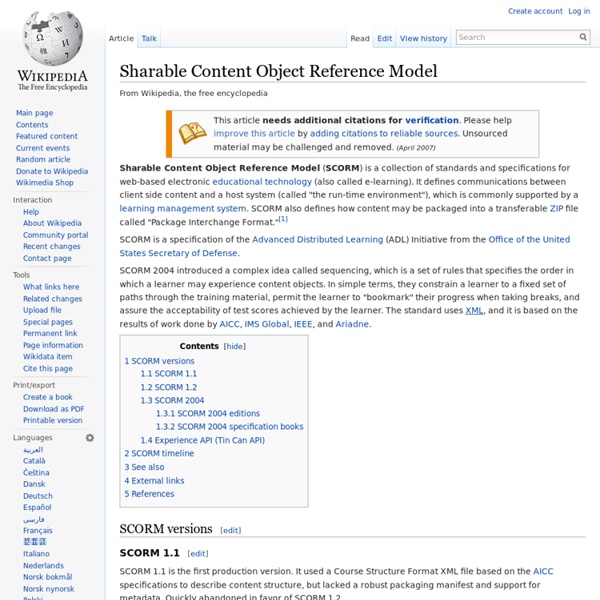Sharable Content Object Reference Model

Advanced Distributed Learning
FREE - Federal Registry for Educational Excellence | FREE – Federal Registry for Educational Excellence
FREE Features These features originally appeared on the FREE.ED.gov features blog. The features highlight resources and ideas related to holidays, awareness months, anniversaries and seasonal topics. January February March April May June July August Back to School: 7 Ways to Help Kids Transition Back to the Classroom September October November December About FREE Federal Resources for Educational Excellence (FREE) offered a way to find digital teaching and learning resources created and maintained by the federal government and public and private organizations. FREE was conceived in 1997 by a federal working group in response to a memo from the President. Technology has made it increasingly easier to find information from government agencies or with custom search tools, like Kids.gov. FREE Disclaimer The U.S.
Learning Registry | sharing what we know
Related:
Related:



